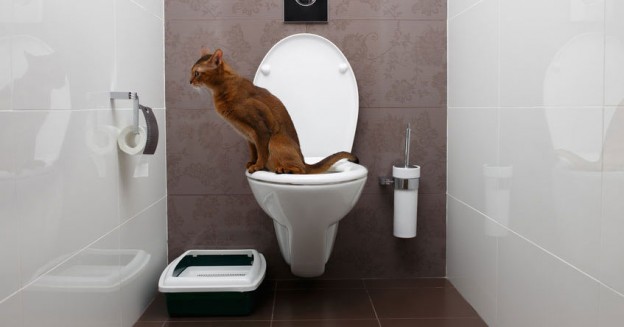Dangers of Flushing Cat Poop Down Your Toilet - Prevent Possible Issues
Automated MarketingAre you in search of know-how concerning Can You Flush Cat Poo or Litter Down the Toilet??

Introduction
As feline owners, it's necessary to bear in mind exactly how we throw away our feline pals' waste. While it may appear practical to flush feline poop down the bathroom, this practice can have harmful consequences for both the setting and human health and wellness.
Environmental Impact
Flushing feline poop presents dangerous pathogens and parasites into the water, posturing a substantial threat to aquatic ecological communities. These pollutants can negatively affect marine life and concession water quality.
Wellness Risks
In addition to environmental problems, flushing feline waste can also pose health and wellness risks to people. Pet cat feces may consist of Toxoplasma gondii, a parasite that can create toxoplasmosis-- a possibly severe health problem, particularly for pregnant females and people with weakened body immune systems.
Alternatives to Flushing
Luckily, there are more secure and much more liable means to deal with cat poop. Consider the complying with options:
1. Scoop and Dispose in Trash
The most common method of dealing with pet cat poop is to scoop it into an eco-friendly bag and toss it in the garbage. Be sure to use a specialized litter inside story and deal with the waste without delay.
2. Use Biodegradable Litter
Choose eco-friendly cat clutter made from products such as corn or wheat. These litters are eco-friendly and can be securely dealt with in the garbage.
3. Hide in the Yard
If you have a backyard, think about hiding pet cat waste in a marked area away from veggie yards and water sources. Make sure to dig deep adequate to stop contamination of groundwater.
4. Mount a Pet Waste Disposal System
Purchase a family pet waste disposal system particularly created for feline waste. These systems utilize enzymes to break down the waste, lowering odor and ecological influence.
Conclusion
Accountable family pet possession expands past offering food and shelter-- it additionally entails appropriate waste monitoring. By refraining from purging pet cat poop down the commode and opting for alternative disposal approaches, we can decrease our environmental footprint and shield human wellness.
Why Can’t I Flush Cat Poop?
It Spreads a Parasite
Cats are frequently infected with a parasite called toxoplasma gondii. The parasite causes an infection called toxoplasmosis. It is usually harmless to cats. The parasite only uses cat poop as a host for its eggs. Otherwise, the cat’s immune system usually keeps the infection at low enough levels to maintain its own health. But it does not stop the develop of eggs. These eggs are tiny and surprisingly tough. They may survive for a year before they begin to grow. But that’s the problem.
Our wastewater system is not designed to deal with toxoplasmosis eggs. Instead, most eggs will flush from your toilet into sewers and wastewater management plants. After the sewage is treated for many other harmful things in it, it is typically released into local rivers, lakes, or oceans. Here, the toxoplasmosis eggs can find new hosts, including starfish, crabs, otters, and many other wildlife. For many, this is a significant risk to their health. Toxoplasmosis can also end up infecting water sources that are important for agriculture, which means our deer, pigs, and sheep can get infected too.
Is There Risk to Humans?
There can be a risk to human life from flushing cat poop down the toilet. If you do so, the parasites from your cat’s poop can end up in shellfish, game animals, or livestock. If this meat is then served raw or undercooked, the people who eat it can get sick.
In fact, according to the CDC, 40 million people in the United States are infected with toxoplasma gondii. They get it from exposure to infected seafood, or from some kind of cat poop contamination, like drinking from a stream that is contaminated or touching anything that has come into contact with cat poop. That includes just cleaning a cat litter box.
Most people who get infected with these parasites will not develop any symptoms. However, for pregnant women or for those with compromised immune systems, the parasite can cause severe health problems.
How to Handle Cat Poop
The best way to handle cat poop is actually to clean the box more often. The eggs that the parasite sheds will not become active until one to five days after the cat poops. That means that if you clean daily, you’re much less likely to come into direct contact with infectious eggs.
That said, always dispose of cat poop in the garbage and not down the toilet. Wash your hands before and after you clean the litter box, and bring the bag of poop right outside to your garbage bins.
https://trenchlesssolutionsusa.com/why-cant-i-flush-cat-poop/

I ran across that piece of writing about Don’t flush cat feces down the toilet when doing a lookup on the internet. Are you aware of somebody else who is sincerely interested in the topic? Feel free to share it. Kudos for your time. Kindly stop by our blog back soon.
Book Today